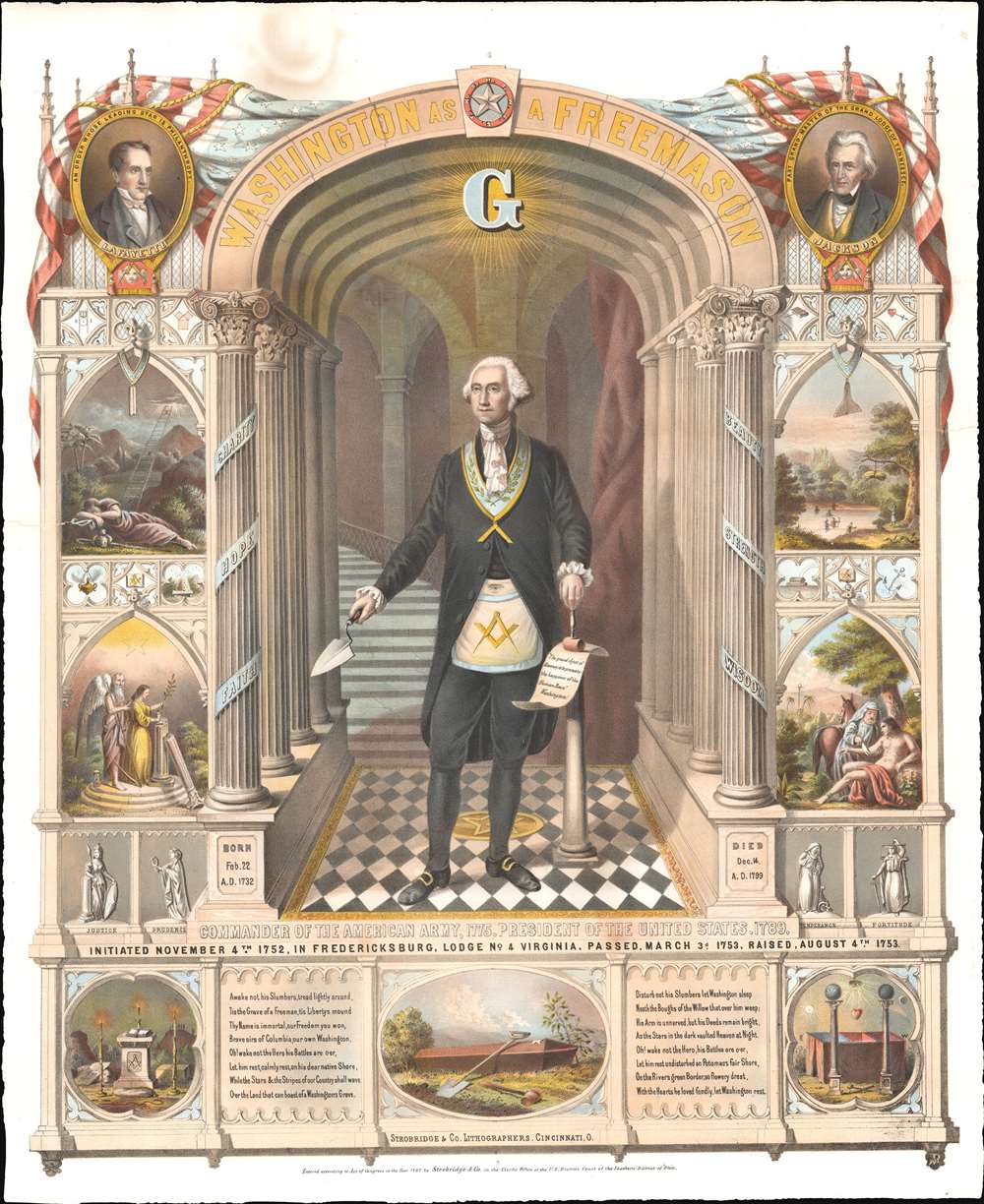1867 Chromolithograph Broadside of George Washington as a Freemason
WashingtonFreemason-strobridge-1867
Title
1867 (dated) 21 x 18 in (53.34 x 45.72 cm)
Description
A Closer Look
Washington, in a Masonic apron, takes center place. He stands in a grandiose neoclassical hall. To Washington's left and right are allegorical scenes representing Masonic ideology. In the upper corners are illustrations of the Marquis de Lafayette and Andrew Jackson, also influential American masons. At the bottom is a coffin, presumably representing Washington's grave, with patriotic poetry to either side.Washington the Mason
Washington joined Fredericksburg Lodge No. 4 in 1753 at the age of twenty - one year before he took his first military commission. He was following in a tradition of American Freemasonry that dated to 1731, when the first American lodge was founded. Freemasonry was embraced by the elite of early American society - among them Washington, Adams, and Franklin. Its secretive rituals were intended to develop religious piety, foster moral integrity, and encourage charity - ideal traits for the 18th century leader. For Washington, joining the Masons was a moral and social duty.Publication History and Census
This lithograph was printed in Cincinnati, Ohio, by Hines Strobridge in 1867. We are aware of at least one subsequent printing in 1870. We are aware of several examples at the Library of Congress, as well as at the Boston Athenaeum, Williams Collage, and the American Antiquarian Society. Examples are rare on the market.Cartographer
Hines Strobridge (November 28, 1828 - April 11, 1909) was a Cincinnati lithographer active in the second half of the 19th century. Strobridge was born in Solon, New York. He moved to Cincinnati in 1843, taking work at a local dry goods store. Strobridge joined Middleton, Wallace and Company, Cincinnati engravers and printers, in 1854. He became a partner five years later in 1859, when the firm was renamed 'Middleton, Strobridge, and Co'. In 1861 W. R. Wallace emigrated to Australia, and Strobridge fully took over the firm. They thrived during the Civil War (1861 - 1865) issuing political and battle prints. After the war, the German immigrant Herman Gerlach joined the firm. Gerlach studied lithography at Sage and Sons of Buffalo and brought with him new lithographic techniques - including chromolithography. In 1866 a devastating fire destroyed the firm, but flush with capital, the used it as an opportunity to grow, expanding to a larger premises and investing in modern steam presses. For the next 30 years, Strobridge dominated the lucrative 'Circus Poster' market. They became experts at piecing together multiple prints to create enormous billboards - one measuring 25 x 100 feet. Strobridge died of a heart attack in 1909, at 86. The firm continued to operate after Strobridge's death until it was absorbed into Crocker Lithographic. More by this mapmaker...

